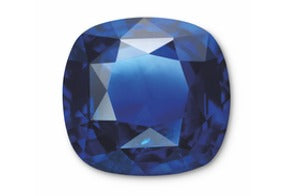Morganite is the pink variety of the Beryl family, it can be light to medium pink or an orangey pink. Morganite's delicate colour is caused by traces of manganese.
Like many gems found in pegmatites, morganite can form in very large crystals. Miners in Brazil have found crystals as large as 10kg. Although morganite is rarer than it’s sister stone aquamarine, large cut stones are readily available.
Morganite’s hardness of 7.5 on the Mohs scale makes it suitable for use in most jewellery providing it has secure settings to protect it from wear. Depending on the transparency of the stone, which can be anything between transparent to almost opaque, morganites are cut into faceted gems, cabochons and beads.

History and Origin
A new source of pink coloured Beryl was discovered in Madagascar in 1910.
Geologist and chief Gemmologist at Tiffany, George Kunz (whom the Spodumene variety Kunzite was named after) proposed the name Morganite to honour his friend J P Morgan for his financial support for the Arts and Sciences and his important gifts of gems to the American Museum of Natural History in New York and Museum of Natural History in Paris.
Morgan was one of the most important gem collectors in the early 1900s, he commissioned Kunz to locate the best possible gem specimens from around the world. This collection formed the Tiffany Morgan collection and consisted of 2176 specimens.



















